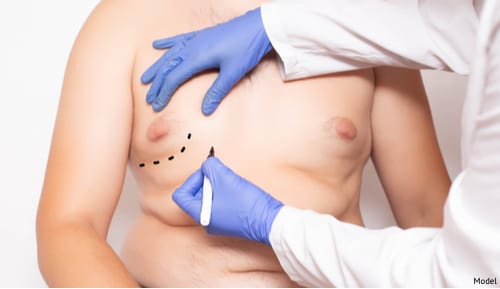
3 Min Read
Extra breast tissue on infant boys can be somewhat disturbing, but it is a relatively common side effect from the rush of hormones that childbirth often brings.
This extra swelling typically dissipates within days of the new baby coming home.
Yet hormones running askew years later may cause the same problem to reappear—causing great embarrassment to young boys and men.
Enlarged breast tissue in men, known as gynecomastia, can be incredibly demoralizing and affect the way men present themselves.
Fortunately, surgeons, like Dr. Hochstein, offer surgical means to remove the excess tissue and restore the appearance of the chest.
A gynecomastia surgery can reduce breast size and improve chest contours for good. Here are three ways men can prepare themselves before going under the knife.
1. Know What to Expect
One way to prepare for anything is to know more about it. With gynecomastia surgery, understanding how it works is a great way to get yourself mentally and physically ready.
How Does a Gynecomastia Surgery Work?
Step 1: Decide Which Method To Use
A gynecomastia surgery involves the removal of extra fat or glandular (breast) tissue to reduce enlarged breasts. This is accomplished through liposuction or excision.
- With liposuction, excess fat is suctioned out.
- With the excision method, an incision is made to remove the glandular tissue and any excess skin.
Step 2: Perform the Procedure
Depending on the patient’s needs, Dr. Hochstein will choose which method will best remove the excess breast tissue. Liposuction and excision may also be combined.
Step 3: Close Incisions
Dr. Hochstein will close any incisions made with sutures.
It also helps to know a little about what you might expect during the recovery process. There will likely be some pain, swelling, and redness for the first few days.
Dr. Hochstein will provide post-operative instructions that include any needed prescription pain medication, ways to change dressings, and how long patients should refrain from any activity.
2. Be in Good Health
Despite what people may think, gynecomastia is not always caused by excess weight or bad lifestyle habits. Factors like genetics and hormones are much more likely to be a cause.
Still, being at a healthy weight before your gynecomastia surgery is a great way to ensure your body ends up the way you would like it to after surgery.
Being in good physical health also helps in other ways, including speeding up the healing process. Recovery tends to be smoother and more comfortable.
It is important to stop smoking at least 2 weeks prior to the surgery. Alcohol must also be avoided one week before surgery as well.
Also, avoid certain anti-inflammatory medicines, such as aspirin, ibuprofen, or Aleve®, which can cause blood thinning during surgery.
3. Give Yourself Plenty of Downtime
There is going to be a recovery period after a gynecomastia surgery. Even the strongest men will have to sit tight and wait for their bodies to finish recovering.
You must give your body the time it needs to heal.
On average, recovering from gynecomastia surgery takes several weeks, but most men can go back to work within a few days and limited physical activities within a few weeks.
Dr. Hochstein will help you determine what your best plan for recovery is and what instructions you will need to follow to make this process as smooth as possible.
For men, being rid of their gynecomastia is often an incredible relief. Results are permanent, giving men peace of mind for years to come.
Want to Learn More about a Gynecomastia Surgery?
Schedule a consultation with Dr. Hochstein at our Miami office by calling us at 305-931-3338 or by filling out our contact form.